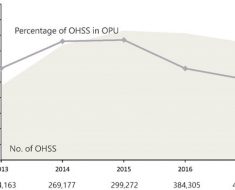Even when sexual assault evidence kits, known as a ‘rape kit’ are available in hospitals, less than a third of those assaulted go through with the full procedure and release the forensic evidence to the police, reveals research published online in Emergency Medicine Journal.
Hospitals need to step up their efforts to help survivors of sexual assault secure justice in an often complex and stigmatising legal system, which contributes to a high attrition rate along the way and relatively few convictions, say the researchers.
In Canada alone, only 33 out of every 1000 cases of sexual assault are reported to the police. Only six lead to prosecution, of which three end up with a conviction.
Hospital emergency departments are often the first point of contact after a sexual assault. And the forensic evidence collected there from bodily fluids, fingernail scrapings, and DNA clothing samples (the rape kit) is essential for pursuing a prosecution in rape cases.
Yet many obstacles prevent survivors from accessing care and completing the rape kit process, say the researchers.
To find out more about the volume of cases and patterns of forensic evidence collection in hospital, the researchers drew on case registry data from the Sexual Assault and Partner Abuse Care Programme throughout 2015.
This programme is run by the emergency care department at Ottawa Hospital, Ontario, which is the only regional facility to offer rape kits.
In 2015, 406 patients from the Ottawa area were seen by the programme, nearly two thirds of whom (64.5%, 262) had been sexually assaulted.
Most (91.5%) of these cases were among women with an average age of 24, but ranging from 16 up to 80.
Drugs or alcohol had been involved in over half of the cases (53.5%). This can affect accurate recall of events, and is often used to undermine the survivor’s credibility in court, the researchers point out.
A similar proportion (54.5%, 110) involved a known assailant or intimate partner. In 16 cases, several assailants had been involved. Most assaults had taken place in the victim’s or assailant’s home, although 1 in 20 incidents happened in student dorms.
Most sexual assault survivors (77%, 202) were eligible for a rape kit. Eligibility hinges on sampling being done within 24 hours to 12 days of the incident, depending on the type of assault.
But only 129 (64%) of those eligible completed the process and less than a third (30%, 60) subsequently handed over the forensic evidence to the police.
Young people aged between 16 and 24 were more than twice as likely to go through with the process, while those seeking care within 24 hours were also more likely to do so.
Those who didn’t know their assailant, or who were unsure of their identity were more than three times as likely to release the rape kit evidence to the police, as were those who had been assaulted outdoors.
Going through with a rape kit can be invasive and potentially traumatic, and many survivors don’t complete it because they are afraid of the process itself and/or going to court, say the researchers.
Sexual assault survivors need to be properly supported in emergency care departments, preferably by a dedicated sexual assault and domestic violence team, to help quell any fears they have and improve uptake of forensic evidence collection, they suggest.
“[Our] findings highlight a high case volume of sexual assault patients and describe hospital-based attrition points before entering the justice system,” write the researchers. Ensuring that [emergency departments] are adequately equipped to provide comprehensive care to sexual assault survivors is a clinical imperative.”
Source: Read Full Article





